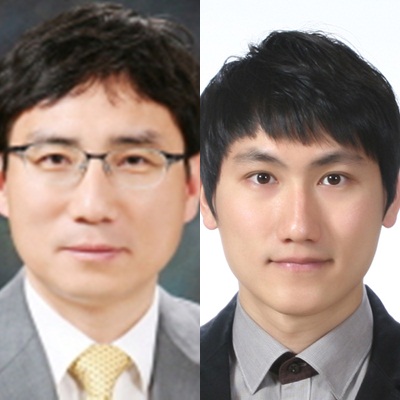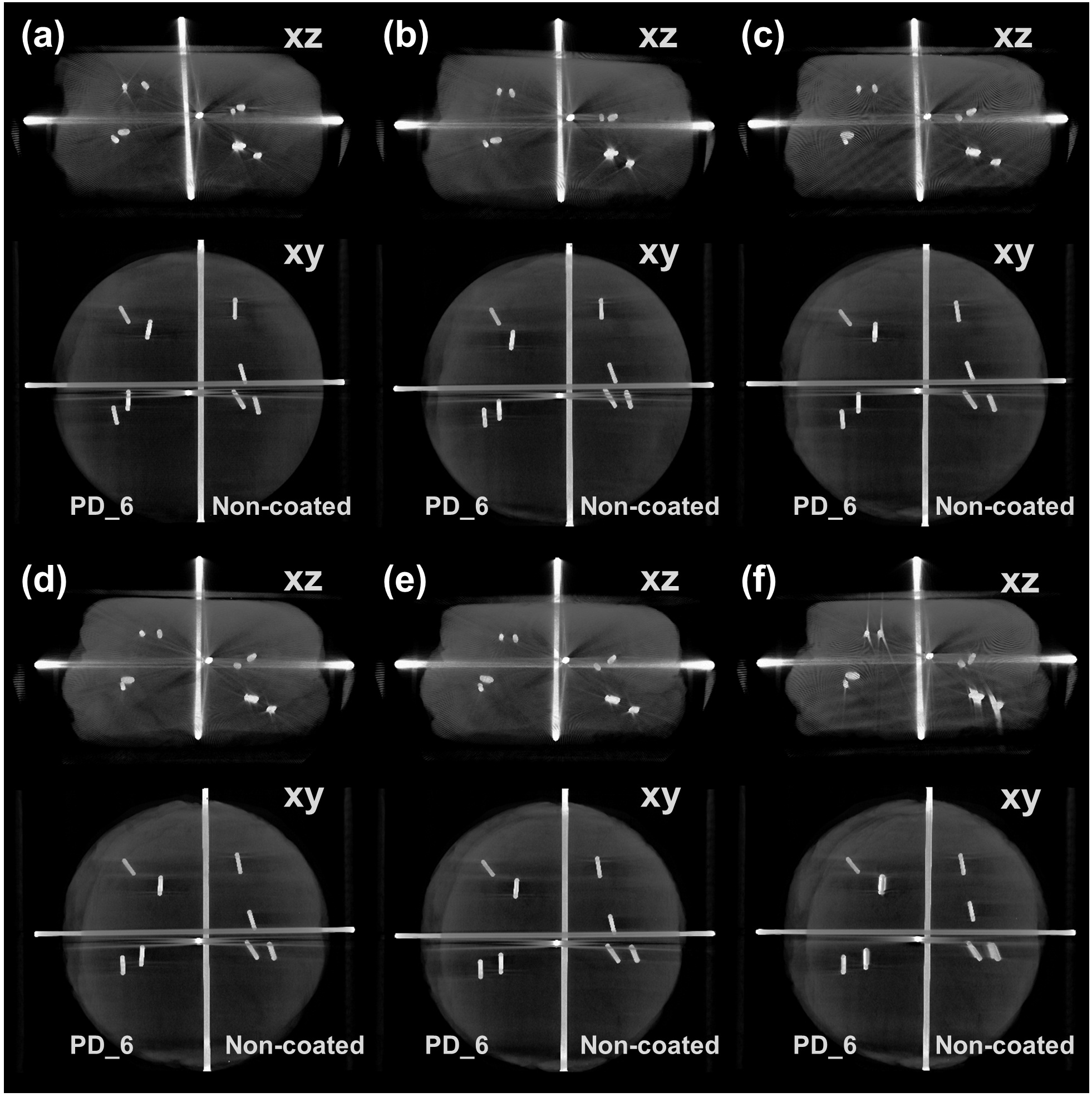글로벌 연구동향
의학물리학
 Surface coating for prevention of metallic seed migration in tissues
Surface coating for prevention of metallic seed migration in tissues(서울대:이현석,이원석,예성준*)
- 출처
- Med Phys
- 등재일
- 2015 Jun
- 저널이슈번호
- 42(6):2805
- 내용

[Abstract]PURPOSE: In radiotherapy, metallic implants often detach from their deposited sites and migrate to other locations. This undesirable migration could cause inadequate dose coverage for permanent brachytherapy and difficulties in image-guided radiation delivery for patients. To prevent migration of implanted seeds, the authors propose a potential strategy to use a biocompatible and tissue-adhesive material called polydopamine.
METHODS: In this study, nonradioactive dummy seeds that have the same geometry and composition as commercial I-125 seeds were coated in polydopamine. Using scanning electron microscopy and x-ray photoelectron spectroscopy, the surface of the polydopamine-coated and noncoated seeds was characterized. The detachment stress between the two types of seeds and the tissue was measured. The efficacy of polydopamine-coated seed was investigated through in vitro migration tests by tracing the seed location after tissue implantation and shaking for given times. The cytotoxicity of the polydopamine coating was also evaluated.
RESULTS: The results of the coating characterization have shown that polydopamine was successfully coated on the surface of the seeds. In the adhesion test, the polydopamine-coated seeds had 2.1-fold greater detachment stress than noncoated seeds. From the in vitro test, it was determined that the polydopamine-coated seed migrated shorter distances than the noncoated seed. This difference was increased with a greater length of time after implantation.
CONCLUSIONS: The authors suggest that polydopamine coating is an effective technique to prevent migration of implanted seeds, especially for permanent prostate brachytherapy.
[Author information]
Lee H1, Lee WS2, Park JI1, Son KJ3, Park M2, Bang YB4, Choy YB5, Ye SJ6.
1 Program in Biomedical Radiation Sciences, Department of Transdisciplinary Studies, Graduate School of Convergence Science and Technology, Seoul National University, Seoul 151-742, Korea.
2 Interdisciplinary Program in Bioengineering, Seoul National University College of Engineering, Seoul 151-742, Korea.
3 Hanaro Applications Research, Korea Atomic Energy Research Institute, Daejeon 305-353, Korea.
4 Advanced Institutes of Convergence Technology, Seoul National University, Suwon 443-270, Korea.
5 Interdisciplinary Program in Bioengineering, Seoul National University College of Engineering, Seoul 110-744, Korea; Department of Biomedical Engineering, Seoul National University College of Medicine, Seoul 110-744, Korea; and Institute of Medical and Biological Engineering, Medical Research Center, Seoul National University, Seoul 110-744, Korea.
6 Program in Biomedical Radiation Sciences, Department of Transdisciplinary Studies, Graduate School of Convergence Science and Technology, Seoul National University, Seoul 151-742, Korea; Advanced Institutes of Convergence Technology, Seoul National University, Suwon 443-270, Korea; and Department of Radiation Oncology, Seoul National University Hospital, Seoul 110-744, Korea.
- 연구소개
- 체내 삽입용 금속물질의 이동을 방지하는 방법에 대한 논문입니다. 기존에는 금속물질의 형태를 바꿔 이동을 방지하는 방법이 많이 연구되었는데, 이동방지 효과 및 실용성 측면에서 한계가 있었습니다. 본 연구에서는 생체접착물질인 폴리도파민을 금속물질에 나노코팅해서 체내이동을 방지하는 기술을 세계 최초로 개발했습니다. 본 기술은 방사성동위원소를 체내에 삽입해서 암을 치료하는 방사선근접치료, 체내에 삽입된 금속마커를 기준으로 방사선치료를 수행하는 영상유도방사선치료 등에 다양하게 활용이 될 수 있습니다.
- 덧글달기









